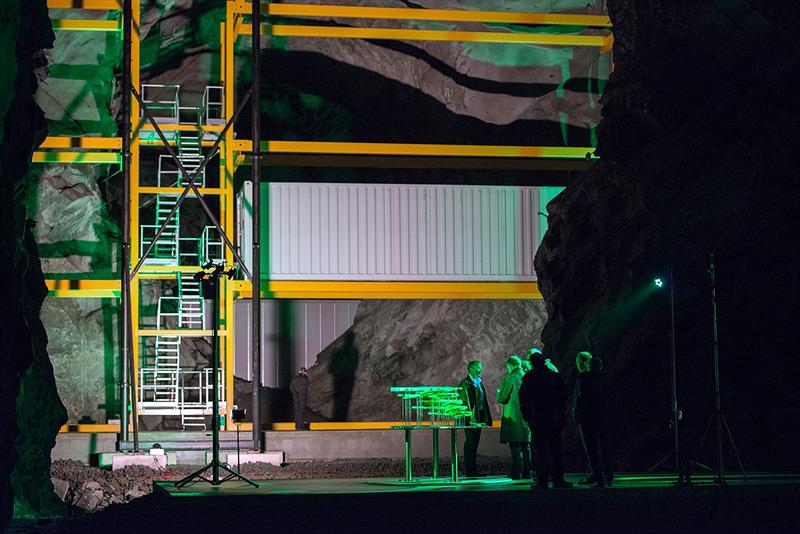“The way we are shaping and developing our cities will be critical to ensuring a sustainable future,” says Patrik Sjöstedt, co-head of Hitachi's Social Innovation Business in Europe. “At the same time, we need to make sure that cities of the future are about more than finding solutions to the challenges that exist today. Our focus should also be on how smart technology and the power of big data will help allow us to bring real social and economic benefits.”
Research from Frost & Sullivan predicts that, by 2025, more than 25 cities around the world could be described as ‘smart cities’, with more than half of them located in Europe and North America.
“Smart-enhanced surroundings will become more interactive and capable of better responding to people’s needs,” suggests Sjöstedt. “What needs to be remembered is that smart cities are not just a concept; they will make a tangible contribution to improving society whilst mitigating the challenges we are currently facing.”
The introduction to all elements of infrastructure of smart, intuitive technology, capable of autonomously reporting on and responding to its surroundings, will be determined by the availability and ability to process data in real time. But that data will not only impact on individuals, businesses and governments, but also on how these various entities are integrated into a bigger framework.
For smart cities to be a success it will be essential that an ecosystem, which brings stakeholders together to support economic development, sustainability, and environment conservation, is created. Big data, mobile technologies and cloud computing will all have a role to play in enabling smart cities to function effectively.
“That data will need to be cleansed, validated, profiled, indexed, secured and correctly tracked. Crucial to all of this is data governance, which ensures that data can be trusted and that people can be made accountable for how data is collected and used," said Maurizio Colleluori, principal data engineer, Think Big Analytics.
He also makes the point that, with a shortage of software engineering talent, data management is often left to inexperienced data engineers.
Data at the heart
“Data is at the heart of the smart city concept,” says Jackson Lee, VP of corporate development in data centre services at Colt Technology Services. “Real-time monitoring systems will generate vast amounts of it, and, routed through intelligent infrastructure, will help generate insights.”
In the case of the smart city, those insights will help to address inefficiencies and improve processes.
“The volume of data being generated is surging and most of that is being sent to the cloud,” explains Lee. “While it is more cost effective, cloud farms are massive and can’t be housed near a city. They need to be in isolated areas, be cheap to build, have excellent network connectivity and many are looking to run them on green energy.”
A good example in Europe of a data centre that has taken advantage of lower power costs, abundant green energy resources, connectivity and natural cooling is the Lefdal Mine Datacentre (LMD) in Norway.
Located on the country’s west coast, the 120,000m2 datacentre operates exclusively on renewable energy and is cooled by water from a nearby fjord. The energy costs are correspondingly low and the system achieves a Power Usage Effectiveness (PUE) of less than 1.15.
Not only can it offer different technical solutions, but with a 200MW power generation capacity, it can offer customers a ‘pay as you grow’ model.

The Lefdal Mine Datacentre
According to Lee, while data can be pushed to the cloud – and facilities like LMD address this growing trend, it is only an effective solution when data does not need to be processed in real time.
“To process data in real time – I’m talking of mission-critical or real-time traffic like video, cloud-based applications or gaming – the extra latency associated with cloud computing can degrade performance significantly and increase security risks. We are seeing rapid growth in the development of edge datacentres when users need to manipulate data in real time without latency.”
Typically, edge datacentres are smaller and, as such, can be positioned much closer to end users. “They can be located within cities or the suburbs they are serving,” Lee explains.
“Edge data centres provide speed,” he continues. “However, the use a lot of CPUs and, increasingly, GPUs means they use a lot of power. We will also see a growing trend towards the use of artificial intelligence (AI) to manage the sheer amount of data that is being generated.
“The applications that are developed and deployed will determine the use of AI, but I can see AI running a lot of this data,” Lee argues.
“The edge is currently dominating the market but, crucially, the edge can go even smaller. Edge data centres could be set up locally, even in peoples’ homes. We simply don’t know how much data will be generated.”
Colt will be rolling out its ultra-high bandwidth Colt IQ network platform across Europe and the Asia Pacific this year and this is an important foundation for its network service offerings.

On-going digital transformation is leading to higher demand for datacentre capacity as well far more flexible business and technical solutions. “The edge and cloud offer different solutions for handling the data from smarter systems, but I believe we will see most processing taking place in the cloud,” Lee suggests (pictured left).
Smart cities cannot be created in isolation and the UK is a hub of smart city innovation, with nearly £100million already spent in preparing cities for a sustainable future. Initiatives like Bristol is Open and CityVerve in Manchester have sought to encourage greater collaboration to make the concept a reality.
“The introduction of smart, intuitive technology to all elements of infrastructure, capable of autonomously reporting on and responding to its surroundings, will allow the value of real time data to be realised,” explains Sjöstedt,. “Cities will only truly become ‘smart’ when they can react to all of the data being generated within them.”
Managing digital transformation has always been a requirement of IT decision-makers, but the momentum of technology change is putting strain on both data centre capacity and the skills and scope of IT teams, as Colleluori noted.
According to Sjöstedt, only by combining the efforts of technology, telecoms, governments and businesses will we be able to deliver the smart city and data management is the key to unlocking value from connected devices across these new smart city ecosystems.
“We have the potential to reduce emissions, offer better healthcare and provide more effective transport services based on the interpretation and analysis of the relevant data,” he concludes. “Real innovation is required to make ‘smart cities’ a reality.”













